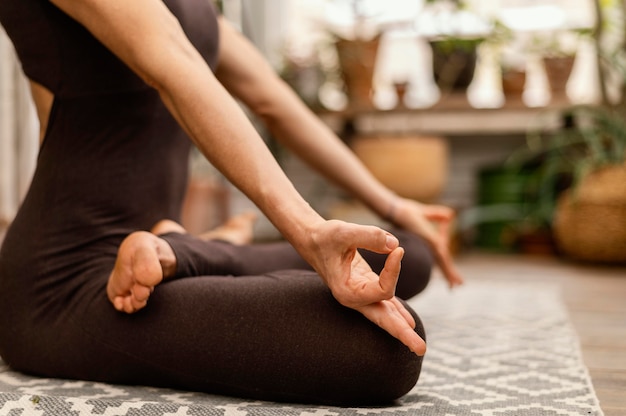

It’s early January, and many people who made New Year’s resolutions are already slipping, whether it’s missing a gym session, indulging in unhealthy eating, or skipping meditation.
Changing habits is tough. The habit I’m passionate about is daily meditation, something I mastered long ago, but I’m particularly interested in helping others establish it. It took me years of struggling before I had a breakthrough, which I’ve since shared with many others with great success.
This breakthrough isn’t a single solution. Instead, it involves creating a set of tools and strategies that support daily meditation. None of these depend on willpower, which is actually not very effective. Studies show that willpower alone doesn’t help in changing habits and often leaves people feeling emotionally drained. Effective habit-changers often set themselves up to avoid temptation altogether, like taking a different route to avoid a donut shop or placing their alarm clock across the room to ensure they get out of bed.
The idea that you can change a habit simply by wanting it badly enough is flawed. Making real change requires actions that support your goals.
Here are some key points I share with people who aim to meditate daily:
Many people try to fit a 30- or 40-minute meditation into their hectic schedules and find it challenging. It’s not about lacking willpower—fitting something new into a busy life is just hard. Instead, start with just five minutes a day. It’s a small, manageable chunk of time that everyone can spare. You can meditate in a bathroom stall at work, after reading your child to sleep, in your car, or on public transport.
Five minutes might not seem like much, and while it may not transform your day, it builds a habit. Once the habit is in place, gradually increasing the time becomes easier, and before you know it, you’ll be meditating for longer periods that can significantly impact your day and life.
A day for meditation purposes isn’t the 24 hours between midnights but the time between waking up and going to bed, which eliminates the guilt of missing a midnight deadline to meditate.
Having the intention to meditate daily is critical. This intention should be a clear, actionable plan, not a vague desire. Plan when and how long you’ll meditate, how you’ll time it, whether you’ll use guided meditation, and if you’ll do it alone or with someone else, even virtually.
Without a plan, it’s easy to forget or fail to fit meditation into your day. An inner voice that dislikes planning often sabotages efforts, preferring spontaneity over routine. But clear planning is essential.
Sometimes, plans get disrupted. Life happens—kids get sick, emergencies arise, alarms fail, or unexpected visitors show up. Having a Plan B increases the likelihood of sticking to your habits. For example, if Plan A is to meditate before bed, it’s not ideal because it doesn’t allow for contingencies. Plan B could be meditating first thing in the morning or during another consistent time slot.
Once you’ve meditated for a few days consecutively, reinforce the habit with a simple mantra: “I meditate every day. It’s just what I do. It’s part of who I am.” This mantra changes your self-perception, making meditation a natural part of your identity, and helps you push through when you don’t feel like meditating.
There was a time when I missed a day after months of consistent practice. I felt like a failure, but I learned not to view it as the end. Instead, see it as a minor slip and an opportunity to learn and adjust your strategies. Ask yourself what you can do differently next time to avoid missing your session.
I have many more strategies to share, but this post is already lengthy. If you’re interested in learning more, I offer an online course called Get Your Sit Together, which includes community support. There’s also a live, four-week Get Your Sit Together course through the New York Insight Meditation Center available via Zoom. Both opportunities emphasize the power of community in maintaining a meditation practice.